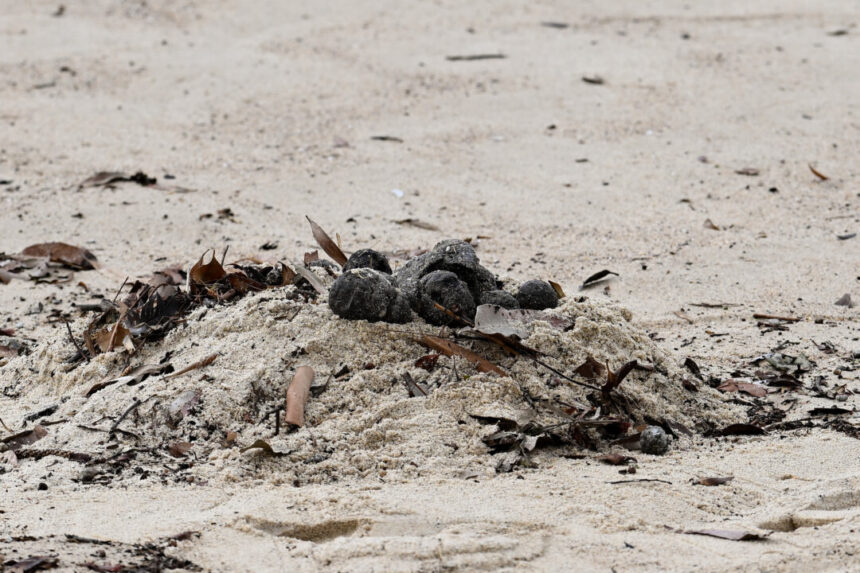Concerns have been raised by local councils and environmental officials after the discovery of oil-linked ‘tar balls’ on Sydney’s beaches. The mysterious black globules have prompted the closure of several beaches in Sydney, including Coogee, Bondi, Clovelly, Maroubra, Tamarama, Bronte, Malabar, Little Bay, Congwong, and Frenchmans.
Initial tests conducted by Randwick City Council confirmed that the substance is a hydrocarbon-based pollutant consistent with the composition of tar balls. These tar balls are formed when oil interacts with debris and water, typically resulting from oil spills or seepage.
To address the pollution concerns, a specialist waste removal contractor has been working to systematically remove and dispose of thousands of tar balls. Mayor Dylan Parker has acknowledged the community’s environmental concerns and emphasized the council’s priority of ensuring public safety and protecting the coastal and marine environment.
Despite ongoing clean-up efforts, authorities are still investigating the scale and origin of the pollution. The New South Wales Environmental Protection Authority (EPA) is conducting extensive testing on collected samples to determine the source and contents of the tar balls. Until the clean-up is completed, the public has been advised not to touch the debris or swim in the affected areas.
Premier Chris Minns has reassured the public that safety is a top priority, and as soon as the source of the pollution is identified, relevant information will be shared with the public. The NSW EPA’s executive director, Stephan Beaman, highlighted the unique characteristics of the material, noting its fibrous nature and varying levels of dryness.
As the investigation continues, the EPA will work with relevant authorities to ensure public safety and clean up the affected beaches. The tar balls, ranging in size from marbles to tennis balls, have been observed moving along the coastline, with their size diminishing as they move further from the original discovery sites at Coogee and Maroubra.
This article includes contributions from AAP.








 Get ready for…
Get ready for…